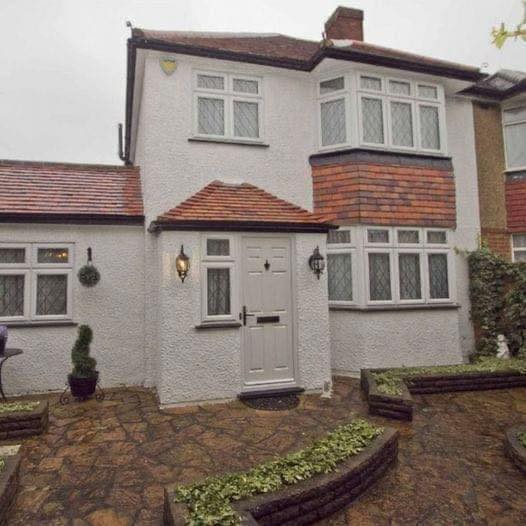It can be challenging to find the perfect house that meets all your needs, and while compromises are often necessary, there are some aspects you simply cannot overlook.

In a surprising turn of events, a property for sale in the UK appeared to tick every box on the exterior, boasting four spacious bedrooms, a master suite, a garage, and a meticulously maintained garden; however, despite its seemingly ideal features, the house struggled to attract any potential buyers.
The listing described the property as well cared for and perfectly suited for a modern family, yet one unusual detail set it apart: upon stepping inside, prospective homeowners were immediately confronted by an overwhelming and uniform display of purple. Every surface in the interior—from the walls and ceilings to the floors and curtains—was swathed in varying shades of purple, leaving little room for imagination or personalization. In the master suite, even the closet doors were painted in a bold purple hue, a design choice that clashed with conventional expectations for a neutral, inviting space.
The bathroom further underscored this striking theme, featuring pristine white tiles accented with delicate purple floral patterns; however, although the bathtub remained white, its floor and sides were bordered by shaggy purple carpeting, a detail that many found both perplexing and impractical. While the exterior of the house retained a traditional and colorless appearance, complete with an ordinary garden and standard curb appeal, the interior’s relentless purple palette created a jarring contrast that made it difficult for buyers to envision transforming the space into their dream home.
@housinghorrors i was NOT ready for the interior 😭 #house #property ♬ original sound – Housing Horrors
Priced at £400,000—approximately $5 million—this significant investment left many wondering if such a distinct aesthetic could ever appeal to a broader audience. The property’s saga serves as a potent reminder that while a home’s external allure may initially capture attention, it is ultimately the interior design and layout that determine whether a property can meet the varied needs of its future owner. For some, the purple-themed design might be seen as a daring expression of individuality and an artistic statement; for others, it is a dealbreaker that overshadows the home’s more conventional features.

As the real estate market continues to evolve, this property has sparked lively discussions among homebuyers and design enthusiasts alike, with many debating whether the audacious color scheme represents a bold, innovative choice or simply a misstep in home décor. This unusual case illustrates a broader point about the delicate balance between creative expression and market expectations in residential design—a home must not only reflect the personality of its owner but also serve as a blank canvas where potential buyers can imagine their own lives unfolding. Alongside this intriguing real estate tale, several other headlines have recently captured public attention.
One story revealed that celebrity Jennifer Aniston endured a childhood marked by instability, providing insight into the challenges she faced growing up. Another heartwarming account detailed how a stepmother delivered touching wedding vows on behalf of her four-year-old child, a moment that resonated deeply with many viewers.
Controversy also erupted when Alec and Hilaria Baldwin faced public backlash following the arrival of their seventh child, while a poignant report noted that legendary singer Kenny Rogers fathered twins in his sixties, tragically passing away when they were just fifteen years old. Although these diverse stories differ from the purple house saga, they underscore the wide array of narratives that color our cultural landscape. Ultimately, the tale of this purple-clad home invites us to reflect on the importance of interior design in real estate and challenges us to consider how much emphasis we place on aesthetics versus functionality. Would you overlook a bold, unconventional design in favor of a home’s other appealing features, or do you believe that a house should serve as a neutral backdrop to your personal style? The debate remains open, and the future of this decorated property awaits an owner willing to embrace or transform its singular look.





